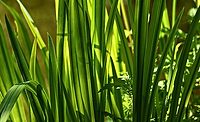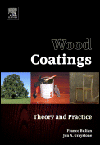An Approach to Setting Standard Criteria for Green Additives




Additives are specialty chemicals and essential components in coating formulations. The application areas range from coatings for automotive, architectural or wood protection to printing inks, plastics and paper coatings. They are used in small quantities to optimize the production process and improve the product properties such as scratch resistance or surface gloss. Although it seems that the amount in the final formulation is negligible, the impact on the final product is extremely high. This and the fact that customers expect environmentally friendly products, e.g. odor-free or solvent-free, suggest that additives must comply with the same environmental regulations as coatings. But what does the term “environmental regulations” mean?
At the moment, there is no global industrial standard available that precisely defines green additives. BYK has given itself the task of implementing standard criteria for “green additives” to provide transparent and easily understandable information about eco-friendly products and support its customers with their design of eco-friendly paint and coating systems. This systematic approach is based on the indicators VOC, ecolabel, renewable resources, biodegradation, life cycle assessment, and product carbon footprint, all of which will be explained in more detail below.
Ecolabel
An ecolabel is a communication tool for environmentally friendly products, and makes it easier for end users to notice these products. Every label is based on different evaluation criteria and is only available for finished products. “EU Ecolabel”, “Blauer Engel”, and “Green Seal” are very popular representatives. Additives are not finished products but they influence the final formulation. Because of this, additives should meet the same evaluation criteria for ecolabels as the final formulation. Only this way can it be ensured that additives have no undesirable side effect on end products.
VOC
VOC (volatile organic compound) describes the content of volatile compounds that occasionally have an unpleasant smell. These can cause headaches or allergies in human beings and are a reason for summer smog. Therefore, reduction of these volatile compounds should be a high priority task for the coatings industry. Products with low VOC content exemplify the hard work being done in this field. There are different methods of VOC content determination. In Europe, the VOC content is measured by headspace gas chromatography. By this methodology, the composition of the gaseous phase of the sample is analyzed using specific parameters. In the USA, the VOC content is analyzed with the EPA Method 24, which is a gravimetric determination.
Biodegradation and Renewable Resources
Biodegradation is the chemical breakdown of materials by the environment. Chemical breakdown means that some substances will be broken up into their particular components and these components will be restored to nature without leaving behind any harmful residue. Modified fatty acids from tall oil are an example of 100% biodegradable raw materials for an additive manufacturer.
In connection with biodegradation, the criterion of renewable resources should be listed, too. A natural resource is considered to be renewable when it is replaced by means of natural processes at a rate that is comparable to, or faster than, the rate at which it is consumed by humans. The idea behind this issue is the substitution of petro-based raw materials by bio-based raw materials enabling producers to operate in a sustainable manner. However, it should be ensured that there is no overexploitation of natural resources.
Life Cycle Assessment and Product Carbon Footprint
The relatively recent tool of life cycle assessment enables companies to evaluate environmental information about a product’s life cycle. Life cycle means from cradle to grave and contains every step: extraction and supply of raw materials, transportation, manufacturing of the product, use phase, and disposal (Figure 1). Every environmental impact that is caused during the life cycle of a product can be shown in terms of so-called environmental impact categories. One example of these impact categories is the method proposed by CML (Centrum voor Milieukunde Leiden2) and depicted in Figure 2. By calculating the environmental effects of a product, it is possible to identify the life cycle stage(s) with a significant impact. Once these are identified, the company implements changes to optimize the life cycle stage(s) and therefore reduce emissions to the environment. To present the results of the life cycle assessment in a proper way, the communication tool EPD3 (Environmental Product Declaration) can be used. This gives manufacturers the opportunity to provide the market with environmental information about their products. The methodologies of life cycle assessment and EPDs are defined according to the standards ISO 14040, 14044, and 14025. This guarantees a uniform and comparable system for environmental information of products.
The product carbon footprint is one part of the life cycle assessment. It evaluates the greenhouse gas emissions over a product’s life cycle and is presented as global warming GWP100 impact category with the unit kg CO2-eq. This indicator benefits from being an easy way to communicate the eco-friendliness of goods to the end user. The international standard for product carbon footprint is under development.
Achieving “Green” Goals Together
The standard criteria for “green” additives are a first step in the direction of ecological product design, whereby not all the criteria need to be satisfied at the same time. It is much more the case that additive producers should be in the position to provide solutions for the criteria specified.
The BYK product range provides environmentally friendly alternatives to the conventional additives. The eco-friendly additives do not necessarily meet all the criteria referred to above, for experience shows that the “green” requirements will frequently vary: sometimes the VOC content is the key criterion, other times it is the eco-label, and occasionally both apply. BYK sees itself here again as a solution provider, supporting its customers with suitable additives in the development of green formulations.
With its strategic initiative “Greenability,” BYK has taken on the issue of sustainability. Ultimately it should be the aim of any industrial concern to internalize sustainability and, as a result, make a lasting contribution to people and the environment.
References
1 http://stopgreenwash.org/
2 Guinée et al., An Operational Guide to the ISO Standards (2001),
http://cml.leiden.edu/research/industrialecology/researchprojects/finished/new-dutch-lca-guide.html.
3 www.environdec.com
Looking for a reprint of this article?
From high-res PDFs to custom plaques, order your copy today!









